All About Bicycle Tires
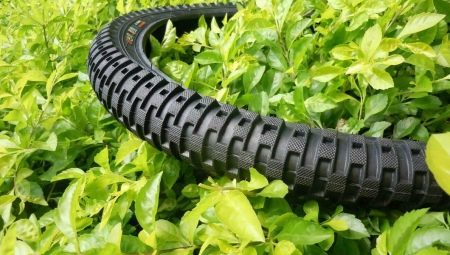
A bicycle tire is that part of a bicycle, without which it would not be able to travel hundreds of meters. Bicycles manufactured before 1888 were not equipped with rubber at all - most of these designs had a practically bare rim as a wheel. Because of this, the bike was uncomfortable to use - just an hour's ride could deprive the rider of the strength even on a flat road.
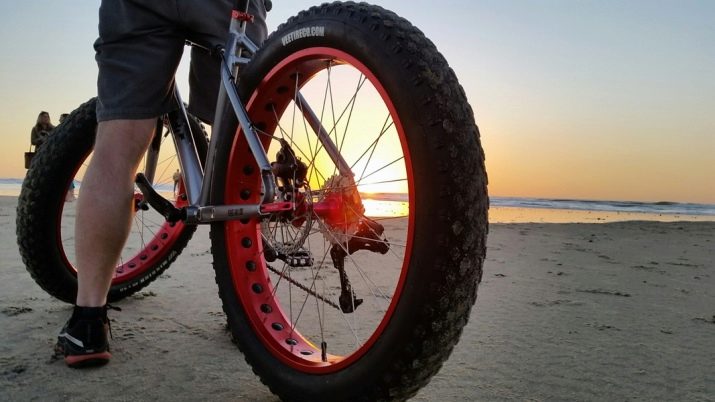
What it is?
Bicycle tires are essentially rubber "shoes", without which the camera, when worn without a rim, is pierced or frayed on the slightest bump, a shard of glass or a piece of wire lying on the road. Tires affect the handling and flotation of a bike to a level that no other component can. The quality of your bike tires determines how long you ride or how far you can go on a given bike.

The specific characteristics of the tire determine the handling when driving on a wet, slippery, icy road - this is the key to safe movement in this type of transport.
When choosing a new tire to replace one of the heavily worn ones or changing both at once for new ones, take into account the weather and season in which you are riding, as well as the quality of the road surface. Different tires are needed for asphalt, gravel, sand and soil cover. The more distance you drive on off-road, gravel or secondary construction materials, the more often you come across wire and broken glass on the road, the more protected the tire you will need.
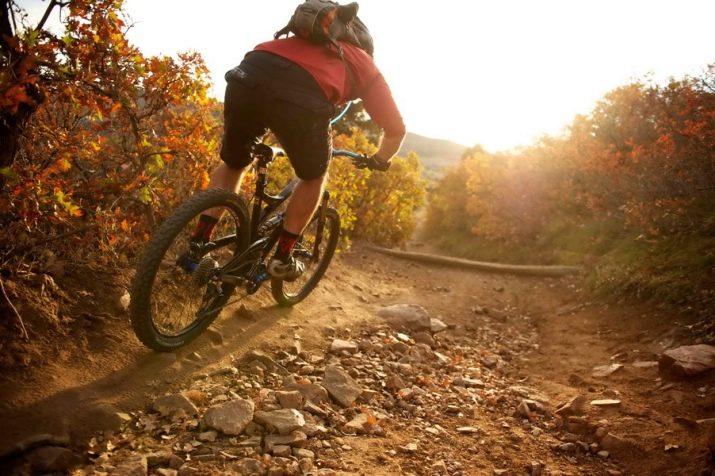
For icy roads and snow drifts in the long winters of the Far North, special "winter" tires will also be required.
Design
Each of the tires is marked by the manufacturer. Accurate decoding of product markers requires knowledge of what it consists of. A bicycle tire is a kind of "pie" of several layers. Layering is a guarantee of quality, if the technologies used in the manufacture of such a "pie" were not violated, forged... These layers are arranged in a certain sequence.
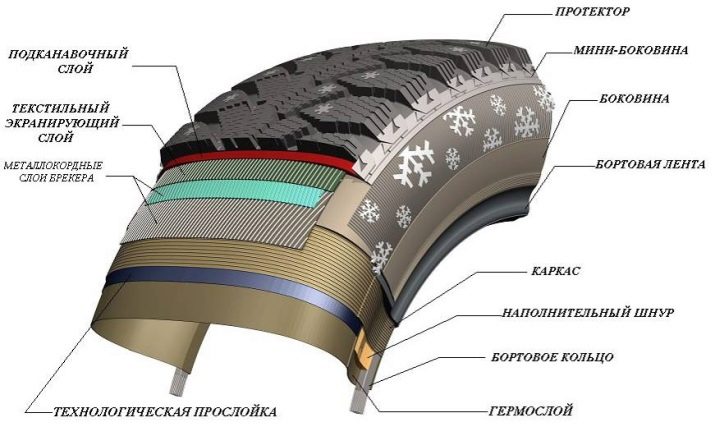
Tread
The tread is the outer cover of a bicycle tire. Working track, which is in direct contact with the road surface during wheel run, which has a clear volumetric pattern. Without it, the bike would slide down the road when braking. The depth (severity) of this pattern determines which roads you can drive on. Lug lines are located on the sides. The protector can be:
- positive - the area of the rubber area on which the lugs are located is equal to or greater than the grooves used when driving on asphalt;
- negative - with high lugs, which have a smaller area than the grooves for off-road driving.
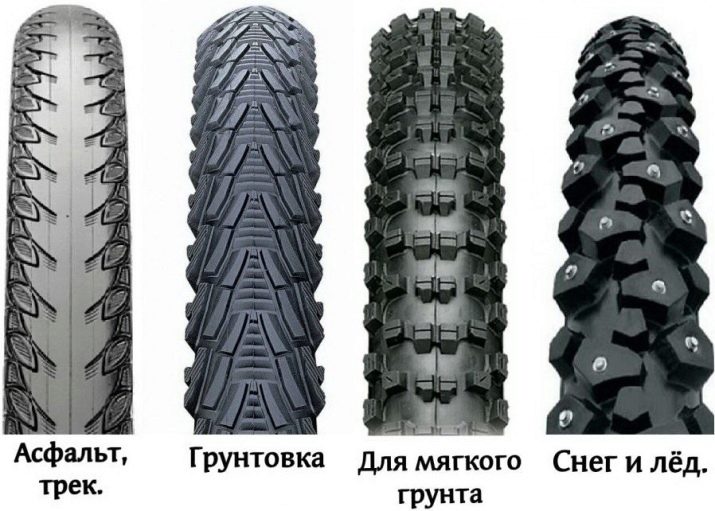
The overall tread pattern determines which roads can lead to injury to the bicycle owner. The direction of the rubber tread is one-sided, versatile and asymmetrical.
Cord
Without a cord, the tire would quickly wrinkle - it is the basis that sets its rigidity and hardness. The corded layer is woven from special threads of artificial origin. The durability of the chamber, more precisely, the resistance of the tire to punctures is determined by a value called the density of the weave of the threads. This is the number of stitches weaving threads per linear inch of the tire, according to the European standard, it is referred to as TPI (or EPI).
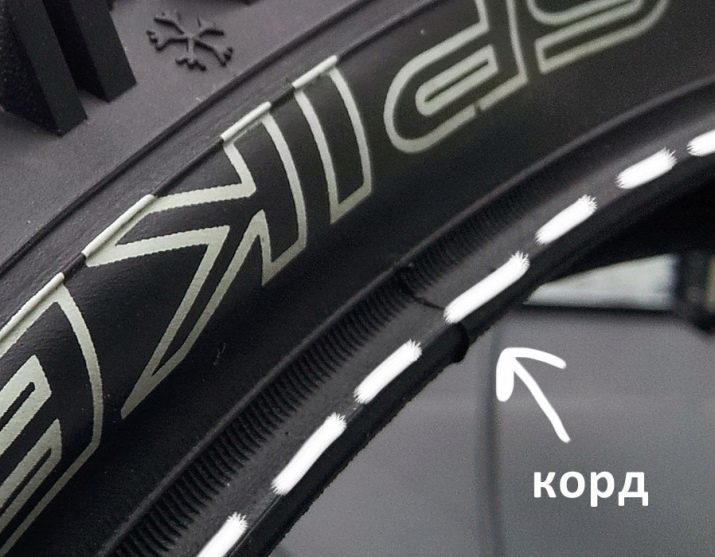
Low-budget road bike tires have a TPI of 24 ... 67 units. Manufacturers (especially the majority of Chinese and some Russian firms) partially compensate for this flaw with a greater thickness of the tread layer. In this case, the weight of the tire increases by several hundred grams. The durability of road tires has been increased - 60 ... 130 units. Tubeless rubber monotubes have a TPI value of up to 320 units.

Board cable
Bending rope - guide, without which the tire would be removed from the rim. It is made from steel wire. In more expensive tires, it is twisted from Kevlar threads. Steel rope tires - clinker. Their disadvantage is the impossibility of packing in an "accordion" (like an air chamber). Kevlar saves up to 100g on each tire. If the bead breaks, the tire will come off the rim as soon as you pick up speed. After that, it cannot be restored.
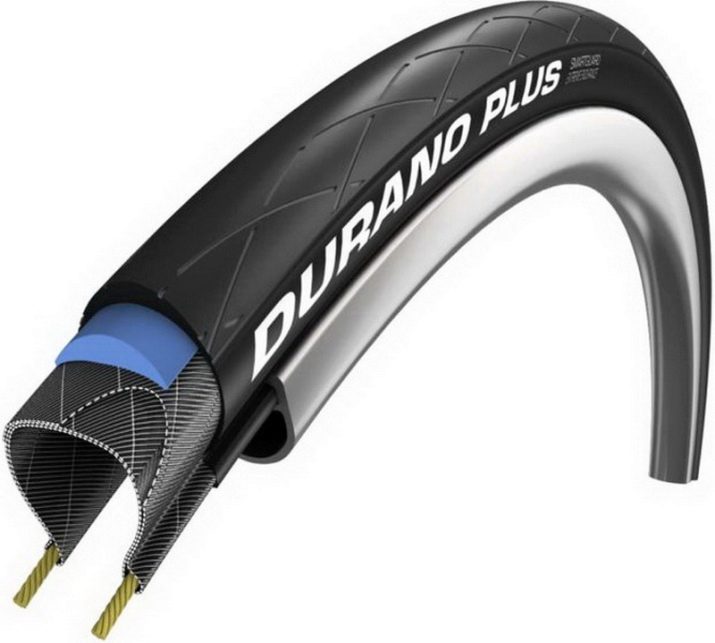
Board
Tire bead - rubber layer with higher wear resistance. It comes in two versions.
- Gumwall - low density of weaving of cording threads and thick rubber layer.
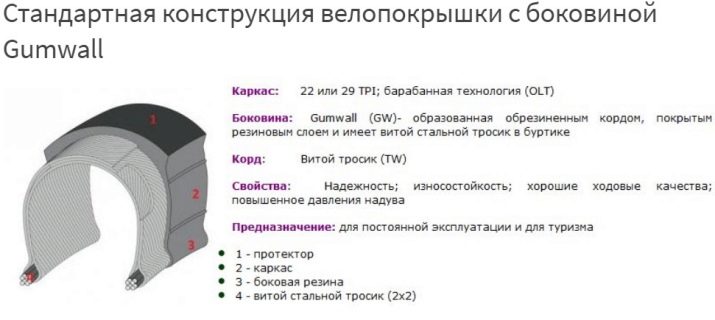
- Skinwall - cord with an improved layer of threads. The thickened rubber is only used at the edge where the tire contacts the rim. Advantage - less weight, disadvantage - the price of a tire is several times higher.

Types, their pros and cons
Pattern and depth, tread height allow attributing this or that tire to a certain type, which determines the purpose of the product. The general rule is that with an increase in the tread depth, the grip of the wheel with the road also increases. Recessed negative tread results in additional force applied by the cyclist's feet to achieve the same cycling speed.
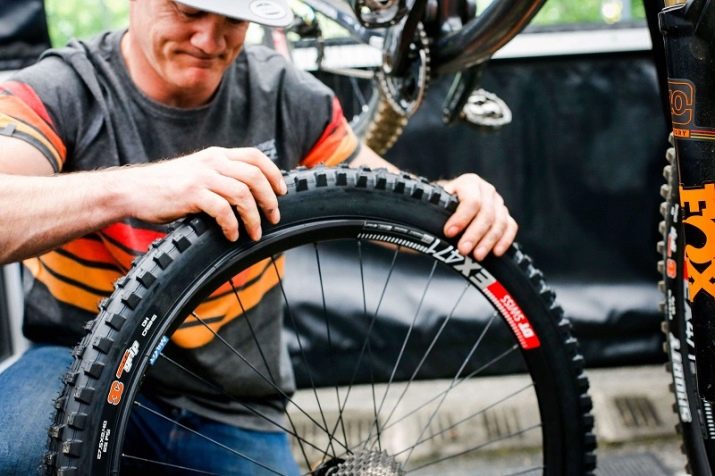
Slick
Slick is an almost treadless tire... Such rubber has only shallow grooves along which water flows down when driving on wet roads and puddles. Braking on muddy and wet roads can be unsafe for the cyclist.
Slicks are ideal for highways with improved asphalt surfaces, when riding on special (closed) cycle tracks. Asphalt with multiple patching will also work. Wheel vibration for non-slick tires takes extra effort from the rider, but this is an exception.The slick is ideal for road and e-bikes that reach speeds in excess of 40 km / h on a highway without a slope in relation to the horizon.
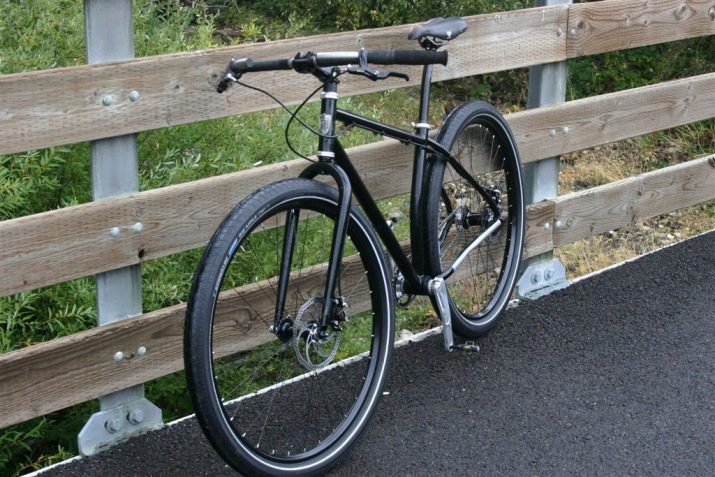
So, at the tires Schwalbe speed cruiser the rubber layer is soft enough that it allows you to turn at a significant slope. However, it is forbidden to brake sharply on them - the cord may be exposed. The Big Apple range has additional Kevlar anti-puncture layers. A tread with a shallow depth, but a pronounced relief will make it possible to put tires on both wheels at once.
CST City Classic Slik is a universal rubber from the Chinese manufacturer Cheng Shin Rubber. Their service life is up to 9 months.
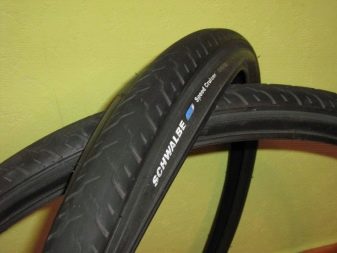

Half slick
Semi-slickers have full-size tread on the sides, on the running strip - shallow lugs and / or furrows that drain water. This rubber can be used on a country road on dry days. This is the best option for multi-day hikes. For example, Schwalbe Sammy Slick Folding tires are suitable for both city and park riding. The Schwalbe Hurricane model is used for mountain bikes and is suitable for sand and highways.
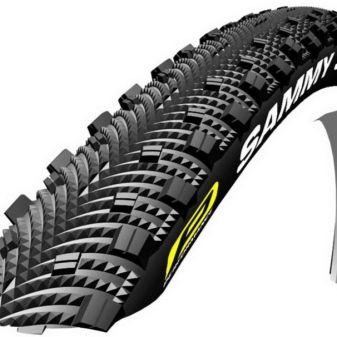
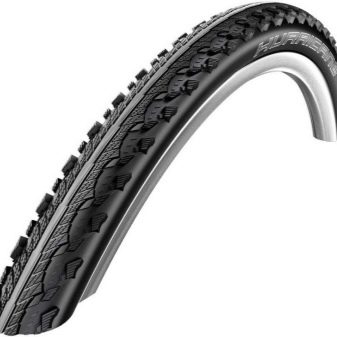
Mountain type
"Mountain" rubber is suitable for riding on the ground, snow, gravel or sand. But it is not suitable for long trips on the highway, as it will be erased in several hundred kilometers.
So, The Schwalbe Racing Ralph delivers a good roll in the middle with a smoother treadmill while maintaining good lateral traction. Suitable for all roads, including forest roads. The racing version of the Evolution weighs 100g less, but is already suitable for highway and track applications. Continental Race King / Sport folds into an "accordion" due to the soft cords. It is also suitable for all roads.
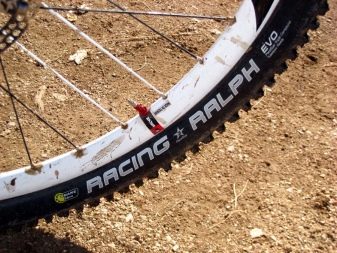

Crossover
High lugs and a wide running strip are characteristic of the crossover (urban) type of tires. Suitable for all roads. There are also colored modifications of them.
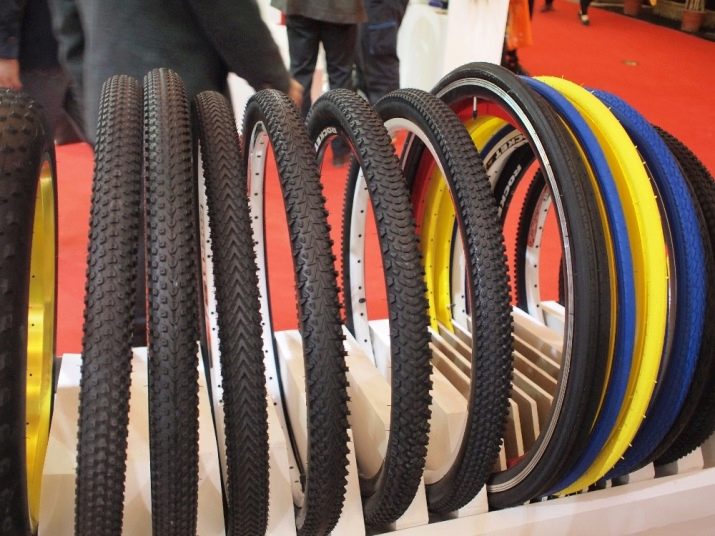
Winter
Winter tires are made of a softened compound and can be studded, which makes it possible to brake and turn on ice and snow. The studs are mostly mortise. Bicycle experimenters often screw short self-tapping screws into a regular slick or semi-slick from the back side, placing or gluing an additional layer of hard rubber or compound to protect the camera.

However, it is better to use a ready-made option.
Tubeless rubber
Kevlar tubeless cable allows you to easily install such a rubber on a rim with raised beads. A sealant ("rubber glue") allows you to further enhance the seal. When punctured, the perforation is filled with sealant without removing the wheel. A variety of tubeless tires - airless bicycle tires - are still a rarity.

Bicycle tube
A "tubular" tire resembles a tube without a tire. However, it is a full-fledged rubber containing a corded component. The bicycle tube is attached to the rim by means of special glue. Compared to previous types of tires it is difficult to break through. Its second advantage is its reduced weight compared to other tires.
However, there is no absolutely impenetrable rubber. Some users, trying to make rubber "indestructible", insert a hose under the tire instead of a tube or several hoses that go into each other. But such a wheel is additionally weighted by 2-3 kg, which makes the bike ride much more exhausting - this is especially felt when going uphill.

The best solution is to use tires with an anti-puncture insert, which is placed between the cord and the tread.
Dimensions (edit)
The tire size is marked on one of the sides. It means the diameter of the tire and its width, for example, 26 * 1.95 inches. Most foreign and a number of Russian firms indicate the dimensions in inches. The width of the tire is its transverse outer dimension in the inflated state of the wheel.
The rim diameter varies for different types of bicycles.
- 26 inch - mainly mountain bikes for adults.
- 12, 14, 16, 18 and 24 inches - folding bicycles for adults and teenagers.
- 28 inch - road (city, or city bikes), hybrid and road bicycles for adults.
- 29 inch - purely marketing designation, in fact, the wheel diameter may be 28 inches. Here, the outer diameter is taken into account, taking into account all the layers of the tire. This value is "inflated" due to the increased width of the rim and rubber when inflated. The niner tire is not put on the narrow rim of a regular road builder.
- 20 inch - mostly BMX bicycles. The tire width is the same as for mountain bikes.

By the thickness (width) of the tire, you can also find out which bike it is suitable for.
- 18-23 mm - for a road bike. Not for wider rim city bikes, fat bikes or 29ers.
- 25-30 mm - Suitable for road city bikes, but will not fit on road bike rims.
- 1.75-1.95 inches - Suitable for hybrid, mountain and folding bikes.
- 1.8-2.4 inches - for cross-country models.
- 2.5-3 inches - suitable for selected types of hybrid, mountain, freeride and downhill bikes, intended for downhill.
- 3-4 inches - the lot of fat bikes, or bicycles with thick wheels.
The width is specified as a decimal number - for example, 27.5 * 1.95 inches. Less common is the recording of the width in the form of an ordinary fraction - for example, 27 * 1 ¾. Only tires are considered identical, where the marking is also the same. For beginners, the only choice is the size of the old bike tire and the similarity of the tread.

The ratio of the width of the rim to the tire itself may be as follows (values are indicated in millimeters).
Rim width | Tire width |
13 | 18-25 |
15 | 23-32 |
17 | 25-37 |
19 | 28-44 |
20 | 28-47 |
21 | 35-50 |
23 | 40-50 |
25 | 44-57 |
32 | up to 75 |
There is also the French system of notation in inches. The width of the tire is indicated in the form of three letters from A to D. The radius or diameter is in millimeters.
If the rubber is too wide, the bike tire will quickly come off the rim while riding, which could cause a fall or collision with another vehicle. If it is too narrow, the wheel will not inflate to the required elasticity, and punctures will become ten times more frequent.

What kind of rubber is it made of?
For the manufacture of outer layers of a bicycle tire, it is used synthetic rubber is an artificial rubber (butyl) fiber obtained from petroleum products. For strength, it is vulcanized with sulfur - here the process of making bicycle tires is similar to those of auto and motorcycle tires. Natural rubber differs by an order of magnitude higher wear resistance, but it is rather difficult to obtain it from plant fiber (it is contained in the milky sap of some plants).

The next layer is puncture-resistant and is made of highly flexible rubber. In the center of the tire, it reaches a thickness of several millimeters. If a cyclist hits a piece of wire from an iron brush, a nail (on his head) or a piece from a broken windshield of a car, then this layer will absorb the cutting force. In many cases, the puncture does not even reach the cord, which saves not only the camera, but also does not touch the cord itself.

Finally, a tightly and high-quality braided cord (shaping frame) also resists a piercing object or particle that has nevertheless passed through the tread and anti-puncture layer of the product. Kevlar or aramid yarns form a mesh embedded in the rubber layer. It is more frequent and thicker than three layers of window mosquito, effectively resists the piercing effects of fragments and wires. This does not mean that you will be free to drive around the placer of bottle shards on a temporary road, where sometimes any secondary building material is used, like on gravel or sand.
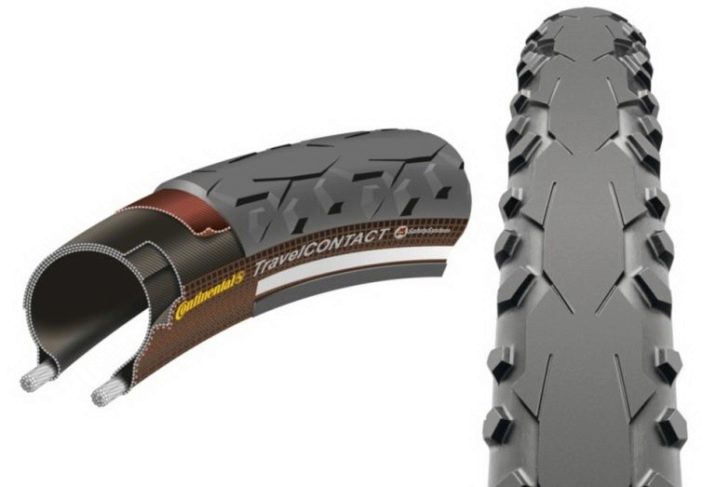
No high-quality tire can handle bits of razor blades, syringe needles, upside-down nails or pushpins, so be careful not to run over them.
Shelf life
Whatever the quality bike tire, you won't be able to use it for 10 years or more. If car tires are capable of "running" for 10 years, especially from well-known brands, for example, Michelin, then bicycle tires will not last that long. Even when stored properly, they will crack and dry out over time. The tire is a "perishable product": having bought it, do not delay its installation and use.
The fact is that after a 5-year storage, it loses several times the wear-resistance margin laid down in it by the manufacturer. That is why bike shops and bike markets strive to sell everything purchased the day before as soon as possible, and the sale, as a rule, contains something that has already significantly deteriorated. Tires and cameras are not the frame or other metal parts of a bicycle: lying for a long time will only make them worse.
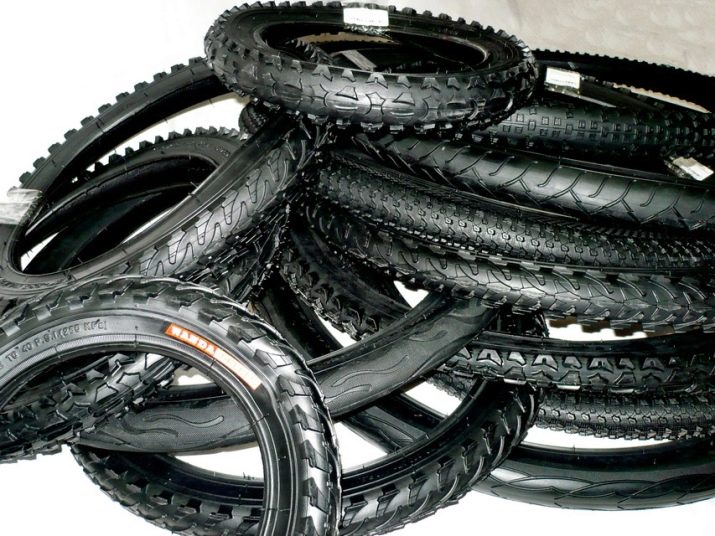
The most expensive bicycle tires are valid for no more than 6 years, and a low-budget product “lives” two times less.
Popular manufacturers
On the bicycle rubber market, the situation changes every year, and sometimes every season, so it is not immediately possible to choose the right one. Among the budget brands are widespread brands from China - for example, Chao Yang, Duro, Stels and others. Often, the buyer pays them only to avoid stopping somewhere in a remote country road, faced with the need to walk tens of kilometers to the nearest regional center or city.

Kenda
The Taiwanese company Kenda produces up to 20,000 bicycle tires and up to 30,000 bicycle tubes per day. It is a recognized leader in terms of sales. For tires, this company produces special strips that inform the bicycle owner about the imminent wear of the rubber. The company also manufactures tubeless tires.
- Kenda kwick roller costs 650 rubles or more. This product is suitable for city trips or out of town, but not for long cycling trips. You can ride it in winter as well - a slick strip with engaging sidewalls keeps the bike well on the descent. The tire is adapted to the bike generator thanks to the reinforced side strip. But by itself, this product will break after a run after 2-3 thousand kilometers.

- Kenda kinetics the price reaches 1290 rubles. Studded rubber, adapted for soft ground and gravel roads, tolerates rocky areas (for example, driving on a railway embankment), brakes well in mud. Prevents acceleration on smooth streets and highways.

- Kenda Kharisma - price from 1041 rubles. A tire with a mud tread, designed for highways and rough roads, can go on a dirt road, roll is satisfactory, spikes do not interfere with gaining speed. Not suitable for XC bikes.

- Kenda nevegal - costs up to 1,000 rubles. Suitable for sandy-clay roads and highways. Allows you to develop faster speed on the track than previous Kenda models. Not suitable for steep climbs and long grass travel.

Schwalbe
German company, production of which is located in Vietnam and Indonesia. The company has a flexible pricing system with constant quality.
- Marathon Plus Tour costs up to 3500 rubles. The anti-puncture layer of SmartGuard is porous, withstands impacts on shards of glass, buttons, nail heads, etc., and absorbs vibration while driving. The cord is made of a compound. Suitable for all roads except off-road. The reflective stripe on the sidewalls will make the cyclist visible on the road at night.

- Racing ralph has a similar price. Triple cord, the product itself is designed for the cross-country style. Suitable for multi-kilometer marathons. Suitable for winter trips, even on the "shuga", as well as on a rocky path. Allows the cyclist to accelerate quickly on the track. The period of validity is sharply limited - aggressive driving will quickly tear such rubber.

- Nobby nic costs up to 1,850 rubles. Triple compound in the cord, elastic and soft rubber. Solid rubber tread. Suitable for mountain bikes. The product allows you to go through a sharp turn at speed during a rainstorm. Suitable for driving on snow. It is easy to accelerate on this rubber, but it is difficult to maintain a high speed for a long time.

- Smart sam - the price is up to 1900 rubles. Built for travel.Rolls well and fits into turns - thanks to the special structure of the studs, it holds when turning on wet and slippery roads. Self-cleaning tread and sidewalls.
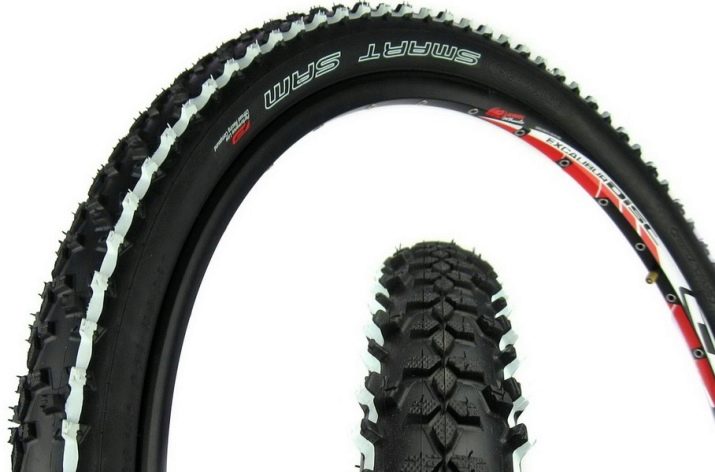
Continental
The oldest factory, which since the end of the 19th century has been specializing in bicycles and tires. 2nd rated in Europe. Patented enterprise for self-repairing tires and anti-slip rubber.
- Sport Contact - price up to 2690 rubles. Triple cord made of compound and threads, non-slip both in wet weather and on marble-glass surface. It will confidently walk up to 3500 km before the tread pattern is smoothed out. The tire is difficult to install due to the thick cords.

- Continental Grand Prix 4 Season has a large margin of safety thanks to the reinforced carbon fiber board. Ideal for racing on broken asphalt. It is made from a premature wear resistant but softened compound.

Maxxis
Taiwanese manufacturer using Japanese, American and European technology.
- Minion DHR II - the price is up to 3440 rubles. Designed for downhill and mountain trails. This tire is recommended for use on the rear wheel. Suitable for fast cornering, slurry, wet roots and gravel. Protected from sharp shocks.
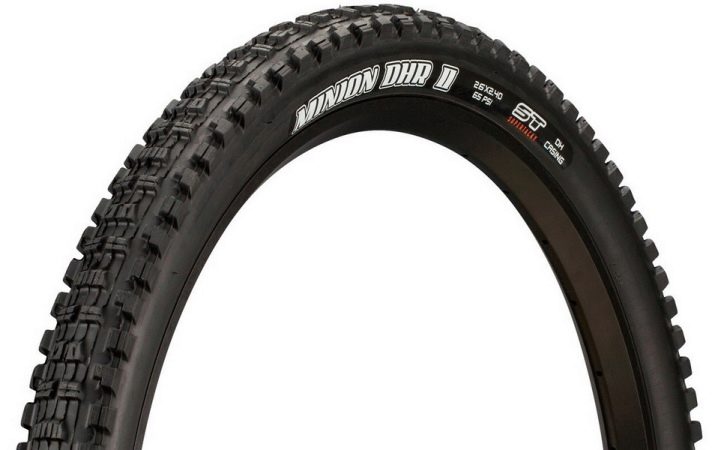
- Larsen TT - up to 2600 p. Reinforced compound, faster passing on gravel. Dirt and stones do not interfere with good grip. You can climb the mountain on the grass after the rain. The product is also protected from sharp shocks.

Michelin
French manufacturer with a two-century history. Inventor of bicycle tires that can be repaired in 15 minutes. It has 70 factories located in 18 countries. Honored Industry Leader. Excellent quality at low prices.
One of the popular products is Protek max city costing up to 1000 rubles. Suitable for urban cross-country and hiking trails. It has a steel cords, one-millimeter anti-puncture layer, reflective tape on the sides, vibration mitigation. No slipping on wet asphalt.
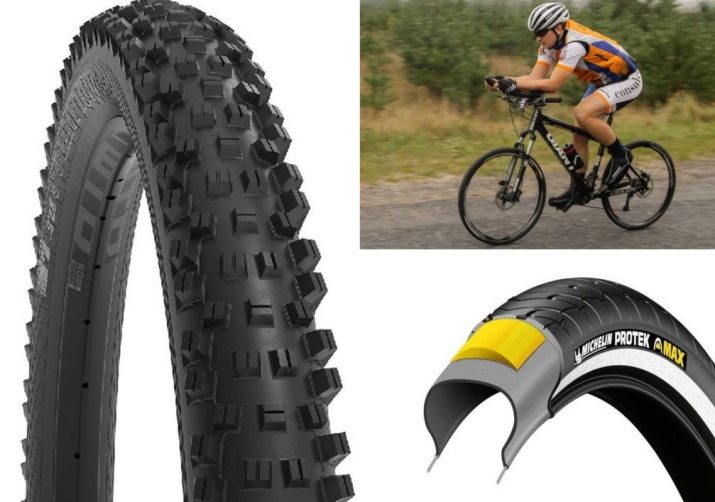
Selection Tips
To choose the right tire in the store, do the following.
- Swipe your finger with noticeable force - there should be no rubber marks on it.
- Pull any of the antennae from the side - it should stretch. This indicates the elasticity of the rubber.
- Check the cords for defects.

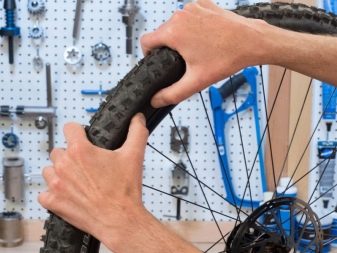
Other tips:
- choose tires with high TPI and special protection;
- inflate the wheels to the pressure indicated on the tire;
- if the set comes with an anti-puncture tape, place it under the camera.
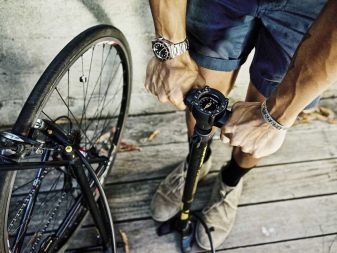
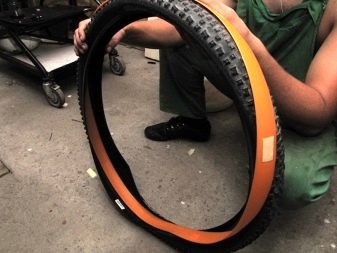
Do not ride without a repair kit (glue, sandpaper and rubber strips from an old camera). Bring an adjustable wrench and screwdrivers to help you remove the wheel and tire.
For information on how to choose tires for your bike, see the next video.








